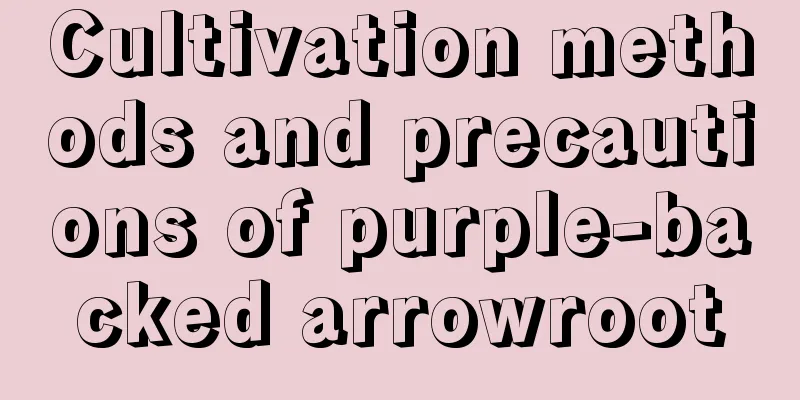Strawberry planting methods and management techniques

|
Strawberries are popular for their bright appearance and charming aroma. From February to March every year, when strawberries are ripe, the small baskets or baskets filled with strawberries on the roadside are always quickly sold out, and many people also choose to go to the strawberry farm in person to experience the fun of picking strawberries. Let’s learn about strawberry planting methods and management techniques. 1. Choose suitable varieties or mix them Choose varieties that bloom a lot under low temperature conditions, have rich pollen , large and neat fruits, good color, light sour taste, and few deformed fruits, such as Fengxiang and Mingbao. For varieties with less pollen and many deformed fruits, such as Qiuxiang, Baojiao Zaosheng, and All-Star, they should be matched with varieties such as Chunxiang and Dana as pollination plants to promote pollination and fertilization, reduce deformed fruits, and increase the proportion of large fruits. 2. Choose healthy and strong seedlings Healthy and strong seedlings have well-developed root systems and strong disease resistance, which can bring larger, higher-yielding and better-quality strawberries. 3. Apply sufficient high-quality basal fertilizer Apply more high-quality, well-rotted farmyard manure to provide sufficient nutrients for strawberry growth, flower bud differentiation, flowering and fruit setting, and fruit development, increase fruit size, and improve fruit sugar content and color. Apply 2,000 kg of decomposed chicken manure per mu, combining ditch application and broadcast application. 4. Practice crop rotation to avoid continuous cropping Crop rotation can enhance the disease resistance of strawberries and reduce the number of deformed fruits and fruits infected by diseases and insects. The open space between sheds can be used for crop rotation. 5. Increase lighting Insufficient light from 2 weeks before flowering to the flowering period will affect pollination and fertilization, resulting in deformed fruits. Insufficient light during the fruit coloring period will result in the fruit having a bland taste and poor color. On the premise of ensuring the temperature in the greenhouse, the straw thatch should be removed as early as possible and covered as late as possible. A reflective curtain should be hung on the north side of the greenhouse to increase the light, and incandescent lamps can be used for supplementary lighting on rainy or snowy days. 6. Ridge cultivation and mulching Ridge cultivation reduces the contact between fruit and dripping water from greenhouse film, enhances sunlight exposure, reduces the occurrence of gray mold, and promotes fruit coloring. Covering the ground with film increases ground temperature, reduces air humidity, prevents the fruit from directly contacting the soil, and keeps the fruit surface clean. 7. Strictly control the temperature The suitable greenhouse temperature is 22-25℃ during the day and 8-10℃ at night during the flowering period, and 20-24℃ during the day and 6-10℃ at night during the fruit expansion period. Too high temperature in the greenhouse will shorten the fruit development period and make the fruit smaller. 8. Water and fertilize appropriately Water appropriately during the flowering and fruiting period, and drip irrigation is preferred. Insufficient water during the flowering period can lead to poor pollination and fertilization, resulting in deformed fruits. Insufficient water during the fruit expansion period will affect the expansion of the fruit. During the flowering and fruiting period, 0.3% potassium dihydrogen phosphate solution should be sprayed continuously for 3-4 times. 9. Assisted pollination Poor pollination and fertilization are the root causes of deformed fruits. Using bees to assist in pollination can effectively reduce the production of deformed fruits. Generally, one box of bees is placed in each greenhouse for pollination during the flowering period. 10. Prevent and control pests and diseases in a timely manner Spraying pesticides during the flowering period of strawberries can easily cause deformed fruits. If pests and diseases occur during the flowering period, pesticides should be sprayed during the period with fewer flowers. The beehives should be moved out of the greenhouse before spraying and moved back to the greenhouse one week after spraying. The above is an introduction to the key points of strawberry planting and management. Maintaining a suitable temperature range is very important for the healthy growth and high yield of strawberries.
|
<<: Planting Method and Cultivation Technology of Bupleurum
>>: Planting technology and cultivation management of Chinese Angelica
Recommend
The ornamental value of pink muhly grass
Ornamental value When it comes to appreciation, i...
What medicinal herbs are the most profitable to grow in dry land (drought-resistant and high-yield medicinal herbs grown in rural dry land)
What medicinal herbs are the most profitable to g...
How many years can okra potted plants live? How to plant okra potted plants
1. How many years can you live? Okra is an annual...
How to prune crabapple after it blooms
Pruning crabapple after flowering Function : The ...
How long does it take for white phoenix leaves to germinate
How long does it take for the white phoenix leaf ...
How to plant peanuts in pots
seed When planting peanuts, you should choose hig...
Does ginseng banyan prefer shade or sun?
Does ginseng banyan prefer shade or sun? Ginseng ...
How to grow black orchid on the balcony in summer
soil First of all, suitable soil should be prepar...
How long does it take for Osmanthus fragrans to adapt to the pot?
The time for Osmanthus fragrans to adapt to the p...
Wax apple seedlings price, wax apple pictures
1. Price The price of wax apple seedlings varies,...
What is the best month to plant edamame in the south?
When is edamame planted in the south? Southern ed...
When and how to plant big leaf spinach
When to plant spinach Large-leaf spinach needs to...
How to grow Begonia truncatum
1. Breeding environment 1. Watering: The iron hib...
Is azalea a plant that likes shade or sunlight?
Does azalea prefer shade or sun? Azalea is a shad...
How to plant egg fruit? Egg yolk fruit planting technology and management skills
The egg fruit is also called the egg yolk fruit. ...









